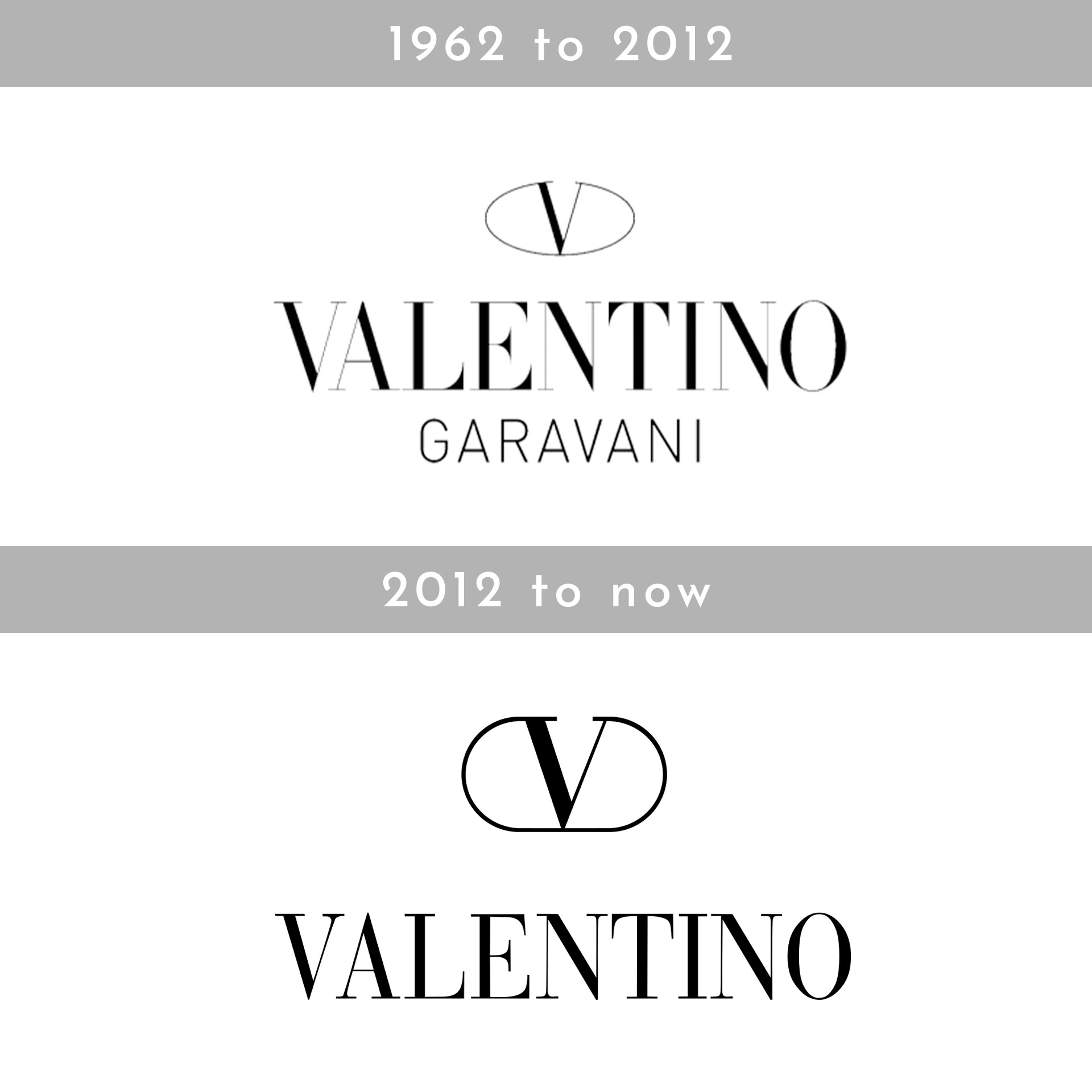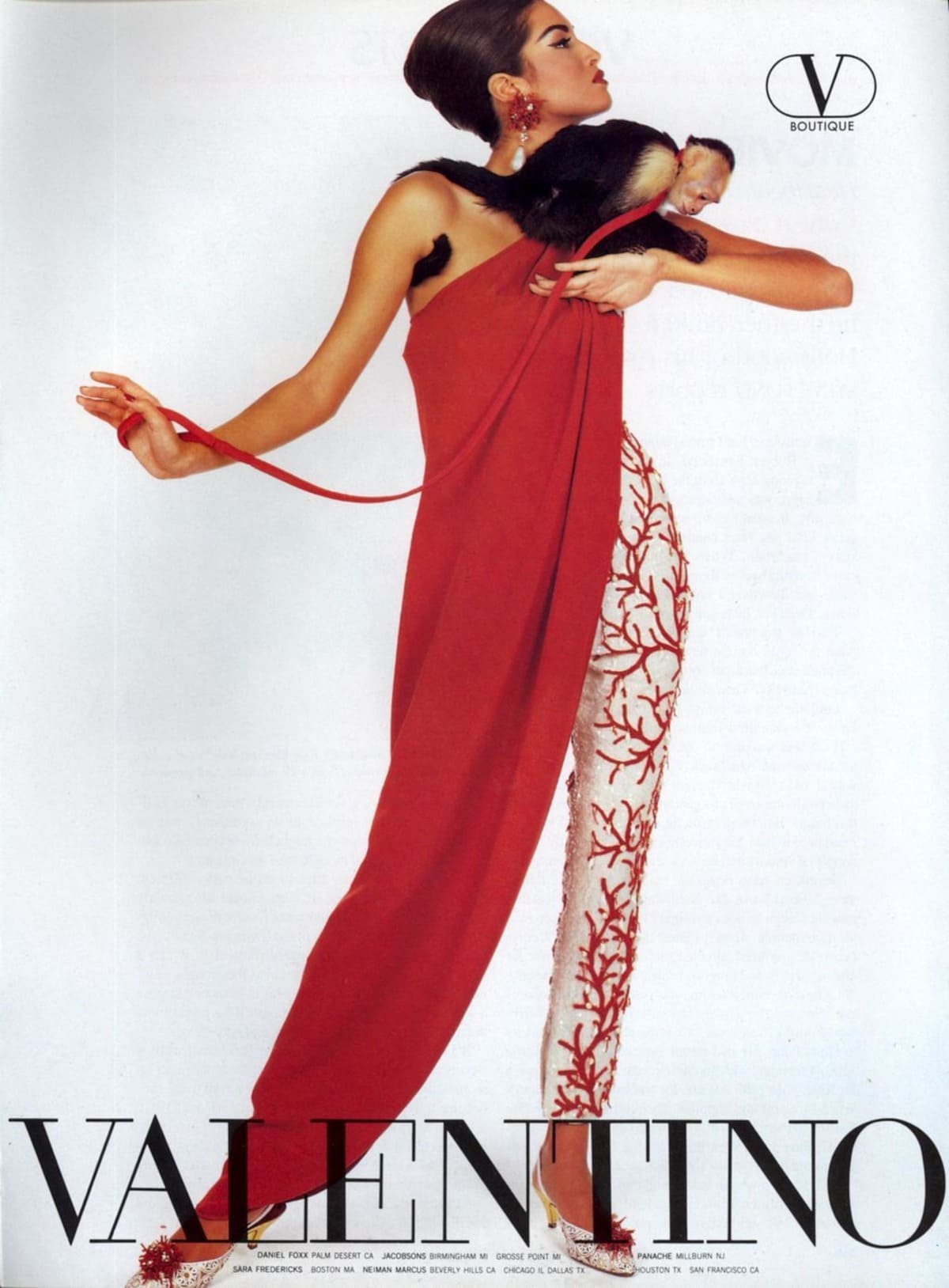Valentino Clemente Ludovico Garavani, best known simply as Valentino, is one of the greatest designers of a generation that defined Italian vintage clothing fashion design and couture. After a few stints in different fashion houses around Europe, Valentino, with the backing of his father and his life and business partner Giancarlo Giammetti, opened his own fashion house in 1960 Rome. It was a regal and grand venue, and early designs of his dresses in red would become so well known that the color would be forever termed ‘Valentino red’. Valentino’s big break would come just two years later at an international fashion show in Florence. After certain designs of his were spotted and admired by Jacqueline Kennedy on a trip to Florence, he would begin working with her and create a collection of dresses for her to wear in her year of mourning of President John F Kennedy. This marked a long history of Valentino working with some of the most prominent figures in the world. Other notable figures he would go on to design wedding dresses for include Anne Hathaway, Courtney Cox, Princess Madeleine of Sweden and more.
As Valentino’s reputation would spread, he became a socialite in the world of art and fashion, with society personalities such as Andy Warhol embracing his presence in New York. Throughout the 1970s, Valentino’s designs generally fit with trends as he played close attention to changes in the New York fashion scene. In the 1980s he would take influence from 1940s ball gowns whilst imposing his usual style of luxury, wealth, and opulence alongside consistent color groupings. In 1990 Valentino and Giammetti created L.I.F.E, a foundation that supports AIDS related patients that is funded by a local art gallery setup and curated by Valentino and Tommaso Ziffer. After a long and immensely successful journey, Valentino and Giammetti decided to sell the company in 1998 for a whopping $300 million to Italian conglomerate HdP, and four years later it was sold again to Marzotto Apparel. Its most recent sale was to the Qatari sovereign fund for over $800 million dollars.
Although Valentino the man and Valentino the company parted ways many years ago, the designer is an important part of the brands legacy, and this year they launched a collection to commemorate the founder’s 90th birthday with all net profits going towards Valentino foundations. And in the last year, the company has taken the bold step of joining the circular economy by launching a buyback scheme. Named Valentino Vintage, participating stores can now offer store credit for second-hand Valentino items that are brought in.
This guide will explain how we use a combination of logos, tags, and other product information to see if a piece is vintage.
Iconic Y2K ‘Very Valentino’ Advert
How to tell if Valentino is vintage from the logo
The Valentino logo is now closely associated with the highest quality Italian design. Like most couture fashion designers, very little has been changed with the logo over the years. And outwardly facing logos are a rarity, which means when trying to determine which logo your vintage Valentino piece has on it the best place to look is the tags.
1960 to 1979 vintage Valentino logo
- The first Valentino logo was a combination of an emblem and text
- The emblem is a V encircled with the oval shape breaking at the V
- And the text says Valentino with Garavani below it in reference to his last name
- Valentino has serif flicks, but Garavani does not, however both are fully capitalized

1960 to 1979 Valentino logo
1979 to now Valentino logo
- The update to the logo would be small, and drop the Garavani
- The emblem was the same, with some minor changes to the shape that encloses the V
- And the font is also slightly thicker

1979 to now Valentino logo

Valentino logos through the years
How to tell if Valentino is vintage from the tags
Unfortunately, the small changes to the logo, and the fact it’s only been updated once, can make it a bit of a limiting tool for identifying when you Valentino is from. This is also due to the fact that the early logo and reference to his second name were rarely seen on tags even from before 1979. So, comparing the tags is the next logical step, but before you do, here’s a few things to bear in mind. Valentino tags only started including sizing, sometimes in the form of extra tabs, in the 1990s. So, if your Valentino has a sizing tab it is likely from the 1990s onwards, although not all pieces from the 1990s onwards would use sizing tabs. Another clue that might indicate that an item is not vintage is if it was made outside of Italy. Now here’s the tags…
Need help with your vintage labels? Submit them on our vintage tag identification page, and we’ll identify your vintage labels for you!
1960s vintage Valentino tags
- The very earliest Valentino tags were white squares
- They had a big V for Valentino in a back square
- And said ‘Boutique Valentino’ across the bottom

1970s vintage Valentino tags
- The tags became wider rectangles
- They started to include the commonly known logos, some with just text and others with the emblem as well
- The vast majority of Valentino from this time will have been from its Boutique or Couture lines

1980s vintage Valentino tags
- At this time the tags would become a more standardized format
- With the text and emblem logo in the middle
- The country of manufacture on one of the sides
- And the product line often beneath the logo, which became a common structure for future tags

1990s vintage Valentino tags
- Whilst jeans had previously been launched by Valentino, a dedicated Jeans line was launched in the 1990s which was a collection of more casual Valentino style clothing
- Many of these and the Miss V tags are completely sewn in
- Boutique and Couture tags were big thick bits of fabric usually found on dresses and gowns
- Valentino Roma was launched that focused on women’s wear like skirts, blouses, and jackets


2000s vintage Valentino tags
- In the 2000s Valentino more aggressively expanded into menswear, launching the Chemise line which would create men’s shirts
- It became common practice for the country of manufacture to be on the right side of the tag
- Tags were often fully sewn in

2010s vintage Valentino tags
- Many of the tags transitioned to being fabric loop tags instead of being sewn in
- They say the sub-brand in very small writing at the bottom of the tag
- Pieces from this era usually have wash tags that include a lot of extra information in multiple languages






Hello, I have a Valentino Men’s Raincoat. Do you do appraisals? It looks like it is from 1990’s.
Thanks, Chris